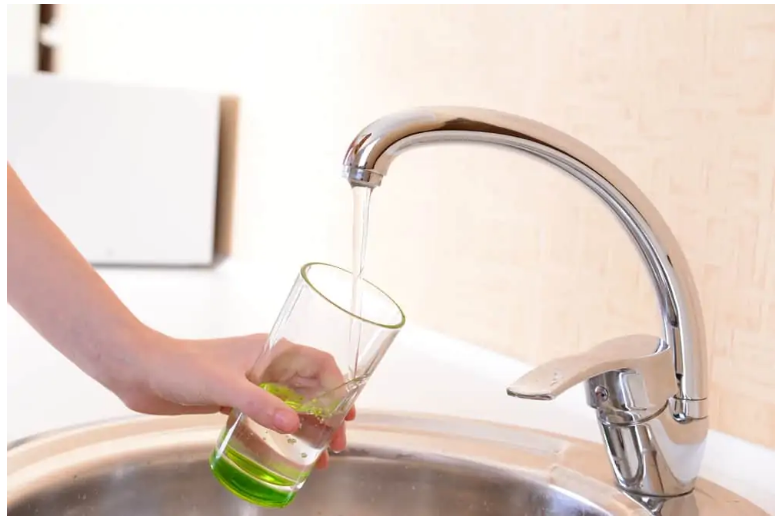Best Approaches for Addressing Low Water Pressure in Your Home
Best Approaches for Addressing Low Water Pressure in Your Home
Blog Article
The publisher is making several good observations related to 10 Reasons for Low Water Pressure in Your House in general in the article followed below.

Low water stress in your house can be a discouraging trouble, influencing everything from showering to cleaning recipes. If you're experiencing weak water flow, there are a number of possible reasons and remedies to discover. In this guide, we'll talk about common factors for low water pressure and practical actions to attend to the issue efficiently.
Intro to Low Tide Pressure
Low water pressure happens when the circulation of water from your taps, showers, and other fixtures is weaker than usual. This can make daily tasks more challenging and less reliable. Understanding the root causes of low tide stress is essential to discovering the appropriate solution.
Usual Reasons For Low Water Stress
Faulty Pressure Regulators
Pressure regulators are accountable for maintaining consistent water stress in your home. If they malfunction, it can result in low tide pressure or irregular circulation throughout your home.
Local Water Issues
Sometimes, the trouble exists outside your home. Local supply of water issues, such as main line leaks or maintenance job, can temporarily lower water stress in your area.
Pipe Obstructions
With time, pipes can come to be clogged with natural resource, debris, or debris, limiting the circulation of water. This is a common issue in older homes with galvanized steel pipes.
Corrosion
Corrosion within pipelines can lead to leakages and lowered water pressure. Rust accumulation can restrict water circulation, specifically in maturing plumbing systems.
How to Diagnose Low Tide Stress
Evaluating Pipes
Inspect noticeable pipelines for signs of leakages, corrosion, or blockages. Focus on any type of uncommon audios, such as knocking or rattling pipelines, which can show issues within the plumbing system.
Consulting with a Plumber
If you're unable to pinpoint the root cause of low tide pressure, think about working with a specialist plumber to conduct an extensive evaluation. They can recognize underlying issues and advise appropriate remedies.
Inspecting Faucets and Components
Beginning by checking the water pressure at different faucets and fixtures throughout your home. If the concern is isolated to specific locations, it may show localized issues.
DIY Solutions to Fix Low Tide Pressure
Flushing Water Heater
Sediment buildup in the water heater can limit circulation and decrease efficiency. Purging the tank periodically helps remove debris and keep optimum efficiency.
Inspecting Pressure Regulator
Guarantee that the stress regulatory authority is working properly. Readjusting or changing the regulator can assist recover proper water stress throughout your home.
Cleansing Aerators and Showerheads
Mineral deposits can build up in aerators and showerheads, lowering water circulation. Remove and cleanse these elements frequently to boost water pressure.
Clearing Up Clogs in Pipes
For minor blockages, attempt making use of a plumbing snake or chemical drainpipe cleaner to clear blockages in pipelines. Beware when utilizing chemicals and adhere to security standards.
When to Call a Professional Plumber
If do it yourself initiatives fail to deal with the problem or if you believe substantial plumbing problems, it's best to look for aid from a certified plumber. They have the competence and tools to deal with complicated concerns securely and properly.
Safety Nets to Preserve Water Pressure
Installing a Pressure Booster
Take into consideration mounting a pressure booster pump to improve water stress in areas with continually reduced flow. This can be specifically helpful for multi-story homes or homes with high-demand components.
Surveillance Water Use
Be mindful of water usage habits and avoid ill-using the plumbing system. Easy changes, such as astonishing showers and washing loads, can help preserve adequate water stress.
Regular Upkeep
Schedule regular upkeep for your plumbing system to stop issues such as deterioration, leakages, and blockages. Dealing with minor problems early can help stay clear of more considerable repair services in the future.
Conclusion
Handling low tide stress can be irritating, however identifying the underlying causes and implementing ideal options can restore ideal circulation throughout your home. Whether it's cleaning aerators, checking pipelines, or talking to a plumber, taking aggressive steps can guarantee a consistent supply of water for your day-to-day demands.
HOW TO FIX LOW WATER PRESSURE IN YOUR HOUSE (EXPERT GUIDE)
The morning shower lacking any real pressure? Bathtub taking hours to fill? Or maybe you’re dissatisfied with the inadequate performance from your combi boiler?
Then you, like millions of others across the UK, might be experiencing low water pressure.
Fortunately, the good news is that you don’t have to continue living this way. The cause of low water pressure in the home is often quite simple, and you may not even require a plumber to fix the problem.
What causes low water pressure in the house?
If you are experiencing issues with water pressure throughout your home, then you may have one of the problems outlined below.
Most of these problems can be fixed quite easily, but for others, you may need to contact a plumber.
Obstructed Shutoff Valve
If you’ve just bought a new home or recently had building work conducted on your property, there is a chance that your water valves were not fully opened.
If the water valve is partially closed, then you may be restricting the amount of water entering your home. To fix this, simply ensure the valve is fully open.
If the valve appears fully open but you are still encountering reduced water pressure, then the valve may be broken. If this is the case, do not under any circumstances try to fix it without proper training.
Often found under your kitchen sink, a water valve will usually look like a bright yellow handle.
Again, if you believe the water valve is broken, contact a plumber immediately.
Leaks in Your Water Pipes
Leaks are the worst-case scenario when it comes to low water pressure.
If the water pipes are damaged, then this will cause low water pressure, as not all the water will make it to your taps.
After you’ve checked to see if the valve is fully open, you can conduct a leak check of your home. Now, this may seem scary, but it is actually quite simple.
Clogged Water Pipes
Clogged water pipes are one of the most common causes of low water pressure.
These clogs usually build-up when your home is supplied water via iron pipes. Iron is particularly vulnerable to rusting which can then break off and cause an obstruction within your system. You also face the problem of things like dirt, gravel or sand entering creating mineral deposits which further block water flowing from the mains water supply.
Unfortunately, if you suspect that clogged pipes may be restricting your water supply, then you will need to contact a plumber.
In this situation, you will either need to have your pipes removed and cleaned or in more severe cases, you could require a new set of water pipes.
Designer Taps
Designer taps look fantastic, but are they built to be efficient in your plumbing system? Modern taps are built for modern homes and they often have lower flow rates that are specifically designed for use within high-pressure systems.
Install a Water Pressure Booster Pump
If the issue is simply that the mains water pressure supply is too low, the simplest fix is to invest in a booster pump. Found in homes of all shapes and sizes, booster pumps are a relatively cheap option to add extra pressure to your home.
Designed to increase water pressure by passing water into the pump from your mains supply and then ejecting it into your home water system at a higher pressure, a booster pump is a truly simple and effective solution to increasing water pressure.
https://www.anchorpumps.com/blog/the-plumbers-guide-to-fixing-low-water-pressure/

As an avid person who reads about , I think sharing that piece of content was a great idea. Kindly take a moment to share this blog entry if you enjoyed reading it. Thanks for being here. Please come visit our blog back soon.
Click On This Link Report this page